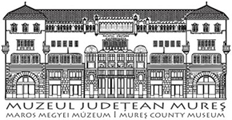Marisia - Maros Megyei Múzeum Évkönyve 30/1. (2010)
Articles
Art and Religions on the Eastern Part of Dacia 99 represents the protective genius of the people, families and individuals. Therefore the images of lares were often accompanied by one or two snakes. The two vessels copying Greek craters that may be restored, subscribe to the unit series decorated with snakes. The rims of the vessels are everted, flattened and divided by three channels. Usually such vessels had three flat and channelled handles. Snakes are reproduced as a string of clay and the heads are suggested by simply flattening the string in a triangle-shape. Eyes are marked by dots and scales are shown by circles printed or indents made with a comb. The snakes from the body rise in the direction of the handles of vessels. Although, usually on the vessels discovered in Dacia on each handle appears one snake, at Criste^ti a handle shows three snakes. All these vessels are rich ornamented with many types of stamped, incised and applied decorations. In the eastern part of Dacia Superior, this kind of vessels were found at Criste^ti32 (one can be completed while from another six fragments were found, preserving the snake representations, too) and a fragment comes from the rural settlement of Sängeorgiu de Cämpie.33 The pot decorated with snakes from Lechinta de Mure§ was used as a funerary urn and it was found together with a cup, a bowl and a silver fibula.34 In the third century these vessels had a religious purpose, but in the fourth century were used also as a funeral urn. Patera handles The patera forms a separate category in the Roman ceramics. Their characteristics are given by their shape, decoration and functionality. Due to the shape and fragile handles, these were apparently used at libations, explaining the presence of the deities and their attributes on the flat handles.35 Intact pieces are rare, but a large number of handles were discovered, which doesn’t offer the possibility to specify the types and sizes of the vessels. From the roman settlement of Criste^ti 14 patera handles were unearthed, some of them already mentioned by V. Rusu-Bolindet.36 Most of the pieces from Criste^ti are simple, flat and decorated in relief with stylized plant motifs. The vessels had rounded or straight edge and the handle started at the edge or from the body of the vessel. Diameter of patera ranges from 13.5 to 22.8 cm. As ornamentation Minerva is the goddess with the most frequent and complex representation, reproduced on four handles. It appears in majestas hypostasis, accompanied by owl, snake and turtle, as specific attributes, as well as by two human protomas. The pieces were imitations after bronze patera handles or Roman statuettes. Patera handles with stylized vegetal decoration are quite roughly executed, compared with the five pieces with representations of deities; although all were cast in moulds and they had the same paste and angoba. Pateras with the representation of plants can be related to the cult of Bacchus and his acolytes. These handles were made in the workshop from Criste^ti, proved by the same yellow paste and red angoba typical for other categories of pottery from the site.37 32 Man 2003, 55-73. 33 Cods 1992, 556-557. 34 Benninger 1938, 124-126; Zrínyi 1976, 140. 35 Nuber 1972, 1-233; Radnóti 1938; Tassinari 1970, 127-164; Vertet 1972, 5-45. 36 Rusu-Bolindet 1997, 325-388. 37 Man 2003, 55-73.
